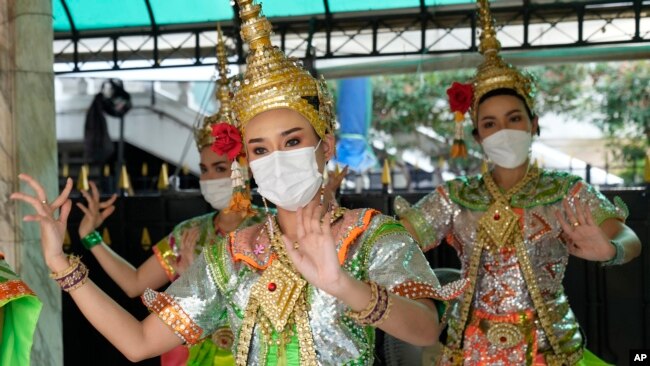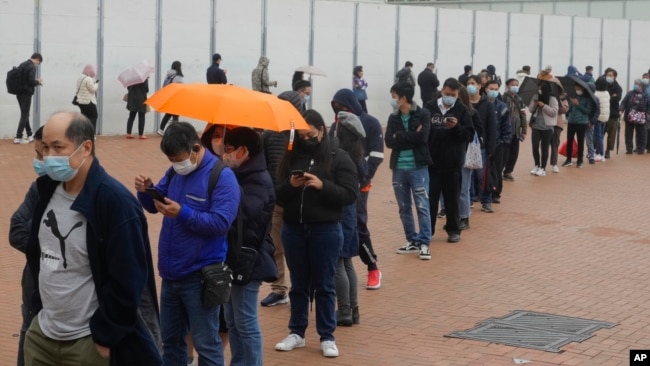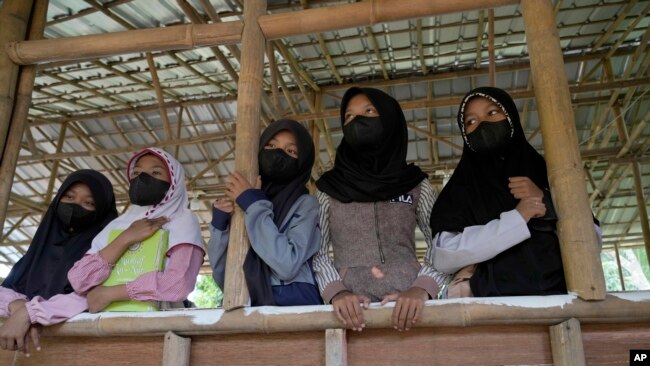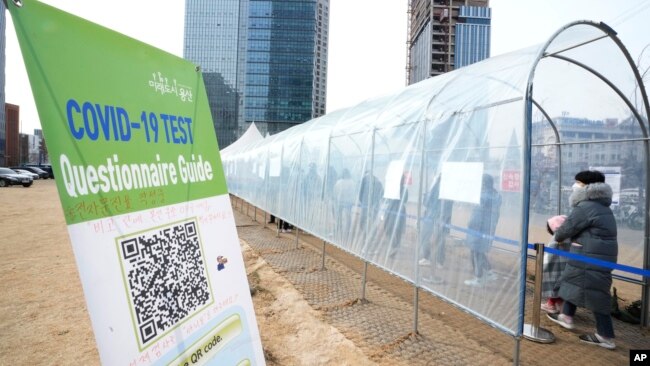それはそうですよね、どう考えても!!
しかしながら、旧正月に伴うコロナニュースにアジアくくりで日本が含まれていて違和感を覚えましたが。。。
BA2もあり、いったいいつ収束するのでしょうね、
また世界を一周するのでしょうか?!
VOAで英語を学び、アジアの現状を見てみましょう!!
アジアでは旧正月明けにCOVID-19の患者数が増加(和訳)
Asia Sees Rise in COVID-19 Cases after Lunar New Year
4 hours ago
旧正月の連休明けに、多くのアジア諸国からCOVID-19の感染増加が報告されています。旧正月は、2月1日から中国やアジアの他の地域で広く祝われました。
多くの国がウイルスの蔓延を防ぐことを目指してパンデミック規制を行う中、この祝祭は行われました。この規制には、一般の人々や家族の集まりの規模を制限することも含まれています。
香港では、COVID-19の感染者が過去最高となり、614人の現地感染が確認されたと当局が報告しています。
香港では”ゼロコロナ”政策を確立し、新たな発生が広範囲に広がる前に迅速に阻止することを目的としています。この政策では、多数の感染が確認された集合住宅を閉鎖することを求めています。また、香港では夜6時以降の飲食店の営業が禁止されています。
エドウィン・ツイ氏は香港の健康保護センターの職員です。彼は月曜日に記者団に対し、当局は今後数日間でさらに多くの患者が発生することを予想していると述べています。「現在の封じ込め対策で、まだ病気を封じ込めることができると期待しています。」とツイ氏は言います。
シンガポールでは、先週の休暇の後、COVID-19の感染者が急増したと報告されています。同国の当局によると、新しい感染者は金曜日に13,000人に達したといいます。この都市では、過去1カ月で10万人以上の感染者が報告されています。しかし、当局によれば、約99パーセントの症例は軽症とされています。感染者の多くは、病気の兆候を見せていません。
他のアジア諸国でも、オミクロン版COVID-19が優勢になるにつれて、同様の感染者数の増加が見られるようになりました。いくつかの国の当局者は、オミクロンは初期のデルタウイルスよりも入院や死亡の割合がはるかに低いと報告しています。
日本では、日曜日に全国で約90,000人の新規感染者が報告されました。このうち東京では17,526人が報告されています。専門家によると、感染症は現在、より多くの病院のベッドを埋め始めている高齢者に広がっているとのことです。
インドネシアでは、患者数は昨年のデルタ版大流行のピークに近い水準になりました。1月6日、インドネシアでは新たに533人のCOVID-19患者と7人の死者を記録しました。日曜日には、1日の患者数は36,057人となりました。日の死亡者数は57人に上り、1週間前の約4倍となりました。
タイでは、月曜日に3日連続で1万人以上の患者が発生したと当局から報告されました。しかし、疾病管理局によると、重症患者の数は減少しており、死亡率もほぼ同じだと言います。
韓国では、38,691人の新たな感染者が報告されました。保健専門家は、同国では2月下旬までに毎日13万から17万人の増加が見られるかもしれないと警告しています。
ベトナムでは、当局は人気のある新年の休暇後に感染が増加する可能性があると警告していました。過去1カ月間にベトナムから報告されたオミクロンの症例はわずか192件で、そのほとんどに病気の兆候はほとんど見られませんでした。
フィリピンはCOVID-19の規制を緩和し、外国人観光客に門戸を開放する方向に動いています。当局の報告によると、日曜日の患者数は約8,300人にまで緩和されました。これは、1月中旬の最高値39,000人から減少しています。
中国本土では、現地での新たな感染者が上下に動き続けています。金曜日に9件まで減少しましたが、月曜日には45件まで再び増加しました。新規感染者の大半は、南部の広西チワン族自治区に集中しています。
中国は、先週金曜日に始まった北京冬季オリンピックの開幕を前に、厳しい制限と集団検査を命じました。
Asia Sees Rise in COVID-19 Cases after Lunar New Year
Many Asian nations have reported a rise in COVID-19 infections following the Lunar New Year holiday. Lunar New Year was widely celebrated in China and other parts of Asia beginning February 1.
The celebrations came as many countries kept pandemic restrictions in place in hopes of preventing virus spread. The rules included limits on the size of public and family gatherings.
In Hong Kong, officials reported a record rise in COVID-19 cases, with 614 local infections identified.
Hong Kong has established a “zero-COVID” policy that aims to quickly stop new outbreaks before they have time to spread widely. The policy calls for lockdowns at housing buildings that experience a large number of infections. Hong Kong has also banned restaurants from operating after 6:00 at night.
Edwin Tsui is with Hong Kong’s Centre for Health Protection. He told reporters on Monday that officials expect to see more cases in the coming days. “With our current containment measures, we hope we can still contain the disease,” Tsui said.
Singapore has reported a sharp rise in COVID-19 infections after last week’s holiday. Officials there said new cases reached 13,000 on Friday. The city-state has reported more than 100,000 cases over the past month. But officials say about 99 percent of cases are considered light. Many of those infected have shown no signs of sickness.
Other Asian nations have seen similar increases in case numbers as the Omicron version of COVID-19 has become dominant. Officials in several countries report that Omicron has a much lower rate of hospitalizations and deaths than the earlier Delta version of the virus.
In Japan, nearly 90,000 new cases nationwide were reported on Sunday. This included 17,526 in Tokyo. Experts say the infections are now spreading to older people who are beginning to fill more hospital beds.
In Indonesia, case levels were close to the height of last year’s Delta version outbreak. On January 6, Indonesia recorded 533 new COVID-19 cases and seven deaths. On Sunday, the daily number was 36,057. Daily deaths rose to 57, nearly four times the rate one week ago.
In Thailand, officials reported more than 10,000 daily cases Monday for the third day straight. But the Department of Disease Control said the number of severely sick patients was dropping and the death rate had stayed about the same.
In South Korea, officials reported 38,691 new cases of the virus. Health experts warned the country may see daily increases of 130,000 or 170,000 by late February.
In Vietnam, officials had warned that infections may rise after the popular New Year holiday. Over the past month, Vietnam has reported just 192 cases of Omicron, with most of those showing few or no signs of sickness.
The Philippines has moved to ease COVID-19 restrictions and open its doors to foreign visitors. Officials reported Sunday that case numbers eased to about 8,300 on Sunday. That was down from a high of 39,000 in mid-January.
In mainland China, new local infections continue to move up and down. Cases fell as low as nine on Friday but rose again to 45 on Monday. The majority of the new cases are in the southern area of Guangxi.
China ordered severe restrictions and mass testing ahead of the start of the Beijing Winter Olympics, which began last Friday.
Words in This Story
outbreak – n. a sudden start or increase in disease
lockdown – n. an emergency in which people are not permitted to freely move about an area because of danger
dominant – adj. the main or most important part of something



